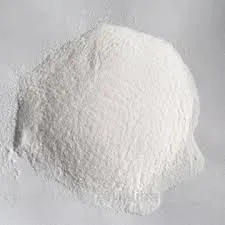
אוק . 17, 2024 12:22 Back to list
mhec-methhyl hydroxyethyl cellulose
Understanding Methyl Hydroxyethyl Cellulose A Comprehensive Overview
Methyl Hydroxyethyl Cellulose (MHEC) is a cellulose ether that plays a crucial role in various industries, particularly in construction, pharmaceuticals, and food processing. As a non-ionic polymer, MHEC is derived from natural cellulose, which is modified through etherification processes to enhance its functional properties. This article delves into the characteristics, applications, and benefits of MHEC, highlighting its significance in contemporary manufacturing and formulation.
Characteristics of Methyl Hydroxyethyl Cellulose
MHEC is characterized by its white, free-flowing powder form, which is soluble in water, thus forming a viscous gel. Its chemical structure includes a methyl group and hydroxyethyl group, contributing to its unique properties. The degree of substitution, which refers to the number of hydroxyl groups replaced by ether groups, influences its solubility, gel formation, and viscosity. MHEC is available in various grades, depending on the desired viscosity and solubility, offering versatility for different use cases.
One of the outstanding features of MHEC is its high water retention ability. This property makes it invaluable in applications that require moisture retention, aiding in maintaining the integrity and performance of final products. Additionally, MHEC demonstrates excellent thermal stability and resistance to variations in pH, making it suitable for use in diverse environments.
Applications in Various Industries
1. Construction Industry MHEC is widely employed as a thickening and water-retaining agent in cement-based formulations such as tile adhesives, grout, and waterproofing compounds. Its ability to improve the workability and application of mortars enhances adhesion and reduces slippage, significantly improving the performance of construction materials.
2. Pharmaceuticals In the pharmaceutical sector, MHEC functions as a binder, emulsifier, and thickener in drug formulations. It aids in the controlled release of active ingredients, ensuring that medications are delivered effectively over time. Its non-toxic nature makes it an ideal choice for various applications, from tablet formulations to liquid suspensions.
3. Food Industry MHEC's role in the food industry is primarily as a thickener and stabilizer. It is commonly used in sauces, dressings, and dairy products, where it enhances texture and mouthfeel. Furthermore, its ability to retain moisture contributes to improved shelf life and quality of food products.
mhec-methhyl hydroxyethyl cellulose

4. Cosmetics and Personal Care In cosmetic formulations, MHEC serves as a thickener and emulsifying agent, enhancing the texture and sensory experience of products like lotions, creams, and gels. Its compatibility with various ingredients allows for the development of stable emulsions, critical in the cosmetic industry.
Benefits of Using MHEC
The adoption of Methyl Hydroxyethyl Cellulose brings numerous benefits to manufacturers and formulators across industries.
- Versatility MHEC's multiple functionality allows it to be utilized across various applications, making it a cost-effective choice. Its properties can be tailored by adjusting the degree of substitution, thus catering to specific formulation needs. - Enhanced Performance The addition of MHEC typically results in improved product performance, including better adhesion, moisture retention, and overall stability.
- Non-Toxic and Safe MHEC is regarded as a safe ingredient, which is crucial in food and pharmaceutical applications. Its non-toxic nature ensures compliance with health regulations, providing reassurance to consumers.
- Sustainability As a derivative of natural cellulose, MHEC contributes to the circular economy. It aligns with growing consumer preferences for sustainable and eco-friendly products.
Conclusion
Methyl Hydroxyethyl Cellulose is an essential ingredient that exemplifies the intersection of natural chemistry and industrial application. Its unique properties make it a valuable component in various fields, from construction to food technology. As research and development continue to advance, the potential applications of MHEC are expected to expand, further solidifying its importance in an evolving marketplace. By understanding and leveraging the capabilities of MHEC, industries can create products that meet consumer demands while also adhering to sustainability goals, thus paving the way for future innovations.
-
Versatile Hpmc Uses in Different Industries
NewsJun.19,2025
-
Redispersible Powder's Role in Enhancing Durability of Construction Products
NewsJun.19,2025
-
Hydroxyethyl Cellulose Applications Driving Green Industrial Processes
NewsJun.19,2025
-
Exploring Different Redispersible Polymer Powder
NewsJun.19,2025
-
Choosing the Right Mortar Bonding Agent
NewsJun.19,2025
-
Applications and Significance of China Hpmc in Modern Industries
NewsJun.19,2025







